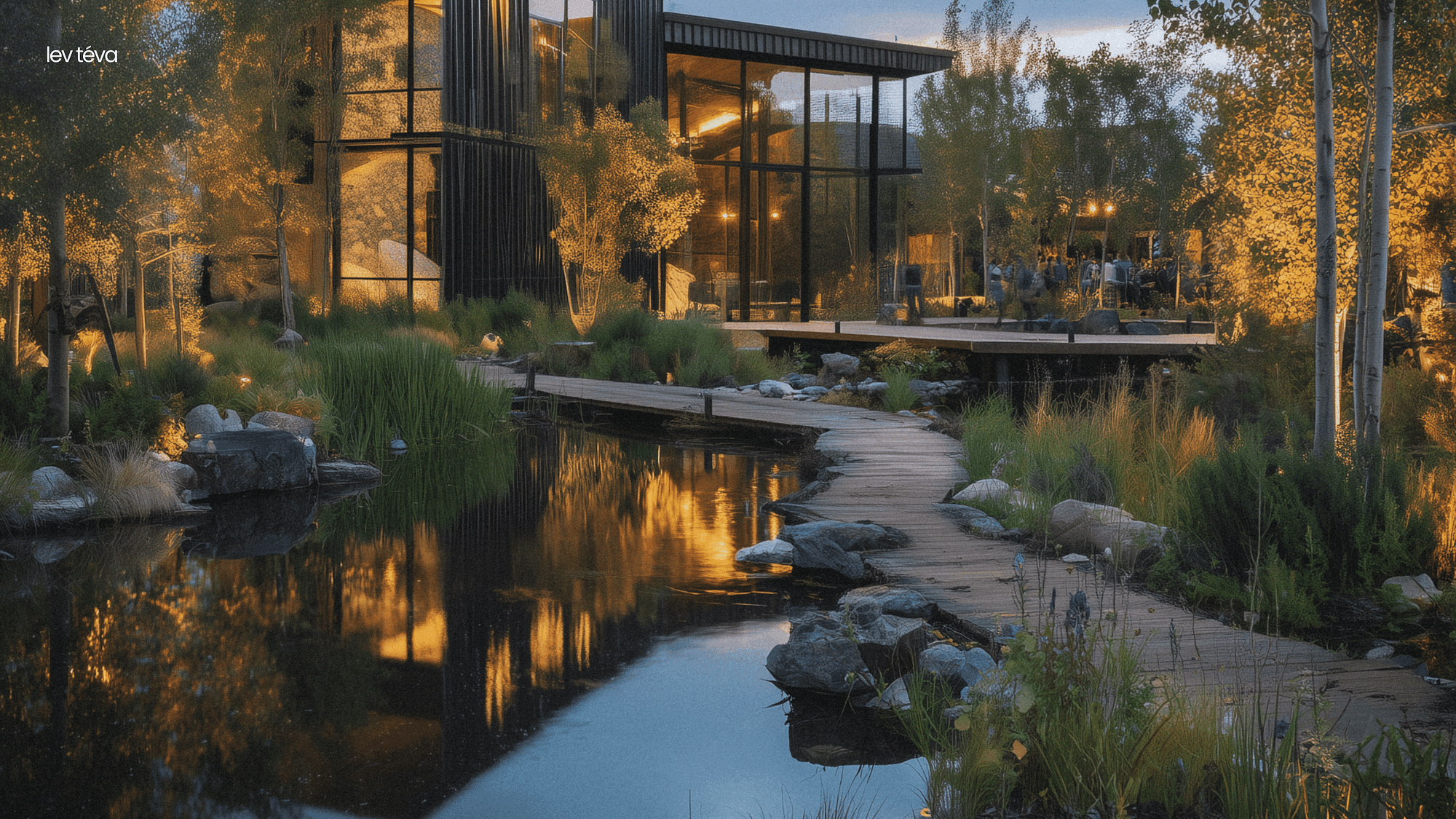Montakin Village Colorado
Montakin Village is more than a neighborhood — it’s a living system. Designed with regenerative principles at every layer, this Colorado-based community nurtures the land, empowers its residents, and redefines what it means to live in harmony with nature.
A Community Rooted in Purpose — Designed for People and the Planet
What is regenerative housing?
The findings in The Regenerative Home reveal a future where existing buildings are given the attention they need to improve energy efficiency and rework spaces for more integrated community living. Building materials and furniture are always reused to reduce costs, waste, and demand for new extraction. Designers investigate locally sourced materials for construction and insulation. And harnessing off-grid power by integrating solar, green hydrogen, and other renewables into the home design becomes the norm.
Benefits of a regenerative community
The Land as Partner
By applying nature’s design lessons, we can create solutions that help support a healthy planet.
Designed for
Connectedness
Interconnectedness is demonstrated in the village design: walkability, shared spaces, natural building materials, permaculture gardens.
More Than Sustainability: Regeneration
Improves quality of life by improving human and earth/environmental health.
WHY PREFAB HOMES?
Prefab homes are built in a factory setting, which allows for more efficient use of labor and materials, leading to lower overall labor costs.
Bulk Material Purchasing:
Developers can purchase materials in bulk for factory production, resulting in significant cost reductions that can be passed on to buyers.
Controlled factory environments minimize material waste through precise cutting and assembly, reducing costs and environmental impact.
Prefabrication significantly reduces the overall construction timeline, allowing for quicker project completion and potentially lower financing costs.
Increased Efficiency and Speed:
Reduced Weather Delays:
Factory construction eliminates weather-related delays, ensuring projects stay on schedule.
Streamlined Process:
Prefabrication allows for a more streamlined and predictable construction process.
Prefabricated homes can utilize sustainable materials and incorporate energy-efficient designs, reducing the environmental footprint of the development.
Reduced Waste:
Factory construction minimizes waste compared to traditional on-site building, making it a more environmentally friendly option.
Energy Efficient Design:
Prefab homes often incorporate energy-saving features like high-efficiency insulation and windows, leading to long-term energy savings for homeowners.
Design Flexibility:
Modern Designs:
Prefabricated homes can be designed to suit modern architectural styles and incorporate a range of features.
Adaptability:
Prefabrication allows for easy integration of new technologies and design trends, making it a future-proof option for developers.
Quality Control:
Factory production ensures consistent quality control, with less variation compared to on-site construction.
Expert Supervision: Prefab factories employ specialized teams and quality control measures, resulting in a higher quality product.
The controlled environment minimizes the risk of defects and errors, improving overall product quality.
